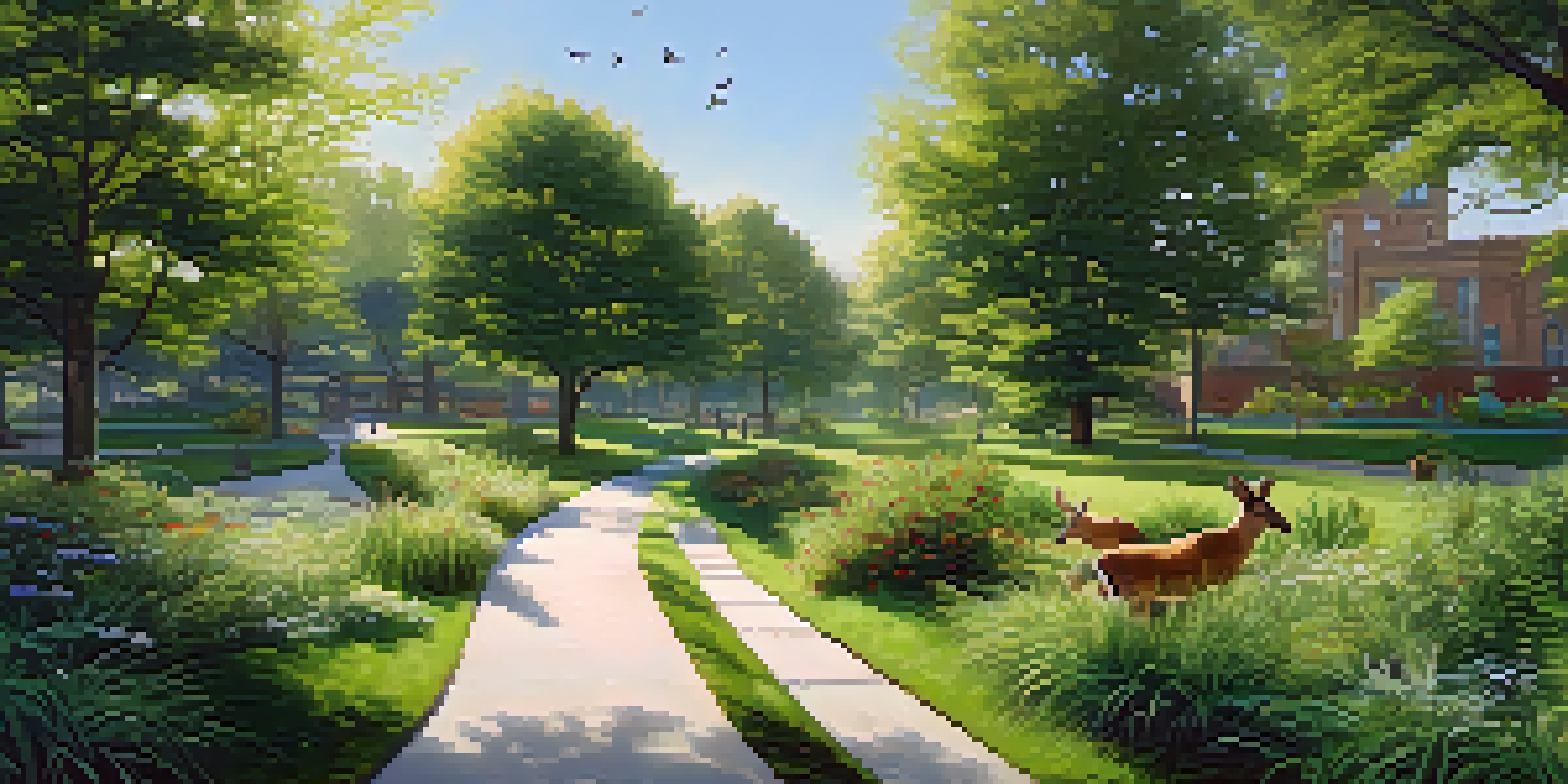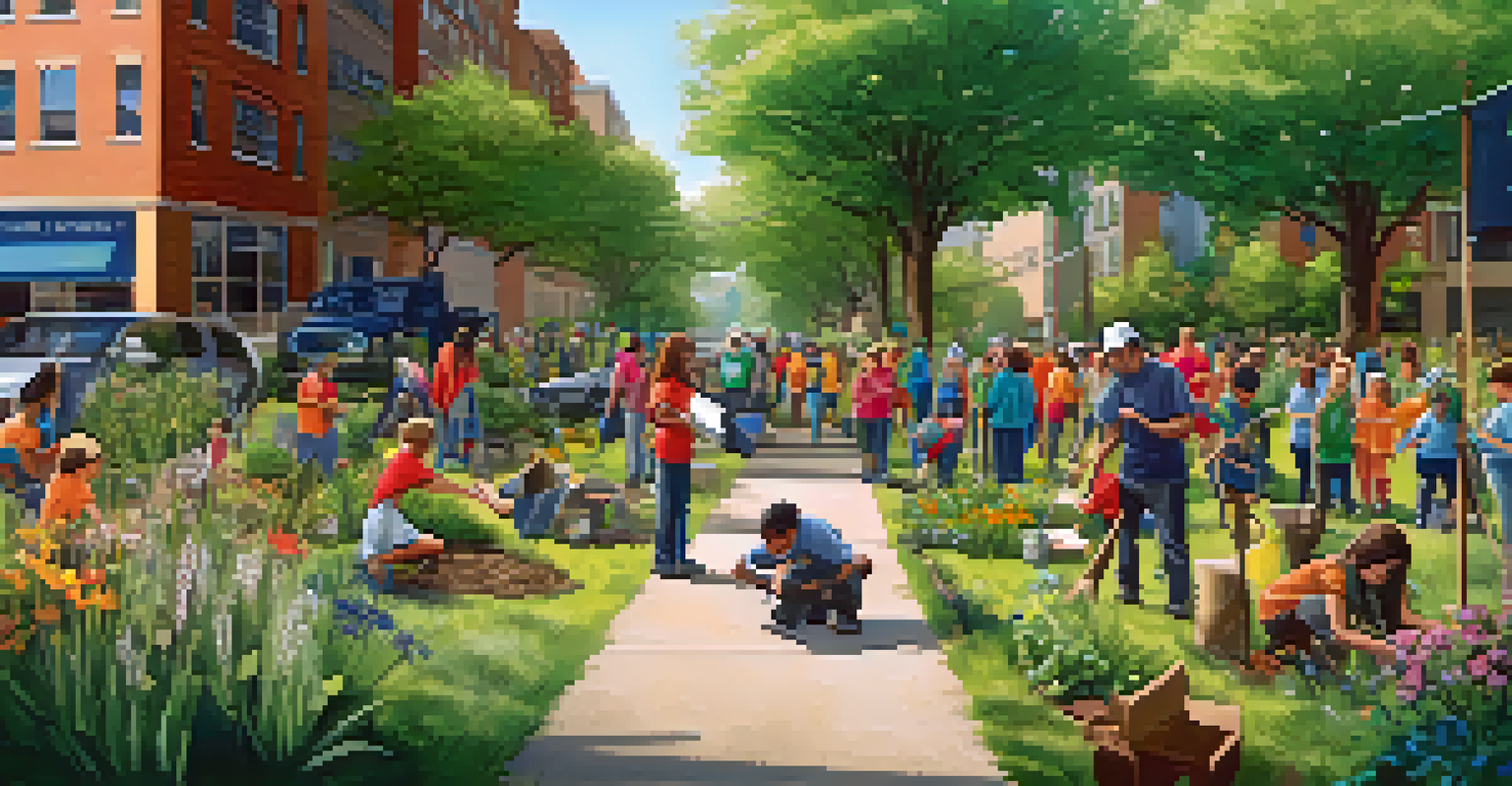The Importance of Urban Wildlife Corridors in LA

What Are Urban Wildlife Corridors?
Urban wildlife corridors are pathways that connect natural habitats, allowing animals to move freely across city landscapes. In Los Angeles, these corridors can vary from green spaces like parks to more structured paths that integrate with urban infrastructure. They are essential for maintaining biodiversity, as they enable species to travel in search of food, mates, and shelter.
The future will either be green or not at all.
Imagine a highway for wildlife, where animals can safely navigate through urban areas without the threat of cars or habitat destruction. This movement is critical, especially in densely populated regions like LA, where natural habitats are often fragmented. By facilitating these connections, we not only protect wildlife but also strengthen the overall health of the ecosystem.
Furthermore, these corridors serve as vital links for genetic diversity among animal populations. When animals can roam between habitats, they are less likely to inbreed, which can lead to healthier and more resilient populations. This is particularly important in urban settings where space is limited and habitats are shrinking.
Benefits of Wildlife Corridors to Urban Ecosystems
Wildlife corridors provide numerous benefits to urban ecosystems, the most notable being the enhancement of biodiversity. By connecting isolated habitats, these corridors create a more complex web of life, supporting a variety of species. This diversity is crucial for a balanced ecosystem, where each species plays a role in maintaining the health of the environment.

Another significant benefit is the promotion of ecosystem services, which are the natural processes that benefit humans and wildlife alike. These include air purification, water filtration, and natural pest control. For instance, pollinators like bees and butterflies thrive in these corridors, assisting in plant reproduction and ultimately contributing to food production in urban gardens.
Wildlife Corridors Enhance Biodiversity
Urban wildlife corridors connect natural habitats, allowing diverse species to thrive and maintain a balanced ecosystem.
Moreover, urban wildlife corridors can improve the quality of life for city residents. By fostering a connection with nature, these green spaces encourage outdoor activities, promote physical health, and enhance mental well-being. People are more likely to engage with their environment when it includes wildlife and natural beauty.
Challenges in Implementing Wildlife Corridors
Despite their many benefits, creating urban wildlife corridors in Los Angeles comes with its fair share of challenges. One of the primary hurdles is land use conflict, as urban development often takes precedence over green space preservation. Balancing the needs of wildlife with the demands of a growing population can lead to difficult decisions for city planners.
In nature's economy, the currency is not money; it is life.
Additionally, there are financial constraints that can hinder the establishment of these corridors. Funding for conservation projects can be limited, and securing resources for maintenance and monitoring is often a challenge. Without adequate investment, even the best-designed corridors may fall into disrepair, losing their effectiveness for wildlife.
Public awareness and support also play a crucial role in the success of wildlife corridors. Many residents may not understand their importance, leading to apathy towards conservation efforts. Educating the community about the benefits of these corridors can help garner support and encourage local involvement in wildlife preservation initiatives.
Case Studies of Successful Corridors in LA
Los Angeles has several successful examples of urban wildlife corridors that demonstrate the potential benefits of these initiatives. One notable example is the Ballona Wetlands, which connects to nearby natural habitats and serves as a refuge for various bird species. This area not only supports wildlife but also offers recreational opportunities for residents, showcasing the dual benefits of such corridors.
Another case is the Santa Monica Mountains National Recreation Area, where a network of trails and green spaces facilitates wildlife movement. Here, species like mountain lions and coyotes can traverse urban areas safely, ensuring their survival. These successful corridors highlight the importance of integrating nature into urban planning.
Community Involvement is Essential
Engaging local residents in the creation and maintenance of wildlife corridors fosters stewardship and strengthens conservation efforts.
Additionally, local organizations have been working to create greenways that enhance connectivity between parks and other natural areas. These initiatives not only improve habitat access for wildlife but also encourage community engagement and stewardship of local environments. The positive outcomes from these projects serve as a model for future corridor development throughout the city.
Community Involvement in Corridor Projects
Community involvement is crucial for the success of urban wildlife corridors, as local residents can play an active role in their creation and maintenance. Engaging the public through volunteer programs, workshops, and educational events can foster a sense of ownership and responsibility towards these green spaces. When people feel connected to their environment, they are more likely to advocate for its protection.
Moreover, community input can lead to more effective corridor designs that cater to both wildlife needs and human interests. By including local voices in the planning process, urban planners can identify key areas for connectivity and ensure that the corridors are accessible for people as well. This collaborative approach not only benefits wildlife but also enriches the community.
Partnerships with schools, businesses, and non-profit organizations can further enhance community involvement. By working together, these groups can organize clean-up events, habitat restoration projects, and educational programs that promote awareness about the importance of wildlife corridors. This collective effort strengthens the bond between people and nature, fostering a culture of conservation.
Future Directions for Urban Wildlife Corridors
Looking ahead, the future of urban wildlife corridors in Los Angeles appears promising, but it requires ongoing commitment and innovation. As urban areas continue to develop, it’s essential to incorporate wildlife considerations into city planning from the outset. This proactive approach can help ensure that new developments include wildlife-friendly features, such as green roofs and permeable surfaces.
Technological advancements can also play a role in enhancing the effectiveness of wildlife corridors. For example, using data from wildlife cameras and GPS tracking can provide valuable insights into animal movement patterns. Such information can inform design improvements and help identify new areas for corridor expansion.
Challenges Require Innovative Solutions
Addressing land use conflicts and funding limitations through proactive planning and technological advancements is crucial for successful wildlife corridors.
Lastly, advocacy for stronger policies supporting wildlife corridors is crucial. By lobbying for legislation that prioritizes conservation in urban planning, communities can help secure the future of these vital ecological pathways. This collective effort will not only benefit wildlife but also contribute to the overall well-being of urban residents.
Conclusion: The Need for Action
In conclusion, urban wildlife corridors in Los Angeles are essential for preserving biodiversity and fostering a healthy ecosystem. They provide critical connections for wildlife, allowing them to thrive in an increasingly urbanized environment. As we face the challenges of urban development, it is crucial to prioritize the creation and maintenance of these corridors.
While challenges such as land use conflicts and funding limitations exist, the successful case studies and community involvement highlight the potential for positive change. By working together, we can create a more sustainable city that supports both wildlife and its residents.

Now is the time for action. By advocating for urban wildlife corridors and engaging in conservation efforts, we can help ensure a vibrant future for both the diverse species that call Los Angeles home and the communities that appreciate their presence.